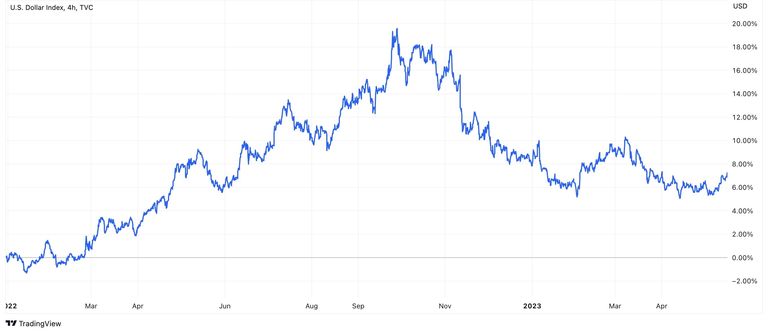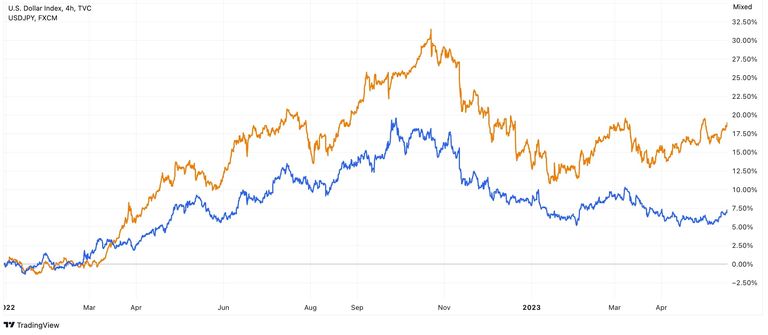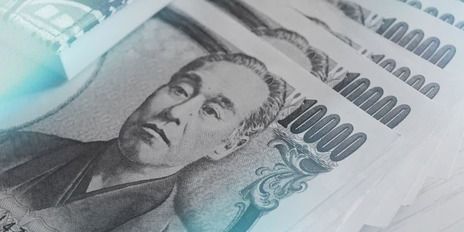The Japanese yen, often associated with the blooming sakura in spring, may experience a different kind of growth towards the end of this year, according to numerous experts. It appears that the yen is underestimated, and in this article, we will explore the potential reasons behind this and delve into why it might happen.
To begin with, let's examine the performance of the US dollar since the start of 2022, a period marked by the military conflict between Russia and Ukraine, as well as energy and financial crises. Due to the Federal Reserve's hawkish policy, the USD exhibited significant strength during this time. However, other major currencies managed to narrow the gap. A glance at the US dollar index chart reveals this trend.

It is important to note that various factors, many of which are predetermined events, can influence forex, stock, and other markets. Staying informed through tools like the economic data calendar can be invaluable. Armed with this knowledge, let's now incorporate the USD/JPY currency pair into the chart, which illustrates that the yen has depreciated against the US dollar to a greater extent compared to other major currencies.

One possible explanation for this observation lies in the divergent policies of the Federal Reserve and the Bank of Japan. While the Federal Reserve actively pursued interest rate hikes, the Bank of Japan maintained a negative key rate of -0.1% as it sought to combat inflation without resorting to rate increases. Consequently, Japan stands as the final bastion against inflation through interest rate hikes.
Many analysts share the belief that the Bank of Japan may tighten its policy during the summer, potentially adjusting the yield curve or longer-term yields. Such policy tightening could serve as a significant catalyst for yen strength.
Meanwhile, the Federal Reserve finds itself approaching the termination of interest rate hikes. Moreover, there is speculation that the regulator might initiate a cycle of rate decreases by the end of 2023. The duration of these consequences is uncertain, ranging from several months to quarters or even years in the worst-case scenario. The divergent policies of these central banks hold substantial implications for the yen's growth in the medium and long term.
Additionally, the US dollar faces other negative factors, including the widely debated risks of a recession and ongoing negotiations regarding the US debt ceiling deal. These factors may further exert pressure on the dollar.
Analysts concur on the future trajectory of the USD/JPY pair and the underestimation of the yen. It is conceivable that the yen will strengthen against the US dollar in the long term, with predictions indicating a potential shift from the current rate of 136 to 120-125 over a 12-month period.
However, it is important to emphasize that such forecasts do not imply an immediate need to purchase yen or exchange dollars for yen. Prior to any trade, conducting thorough research is essential. Only through this approach can one potentially make profitable trading decisions.

